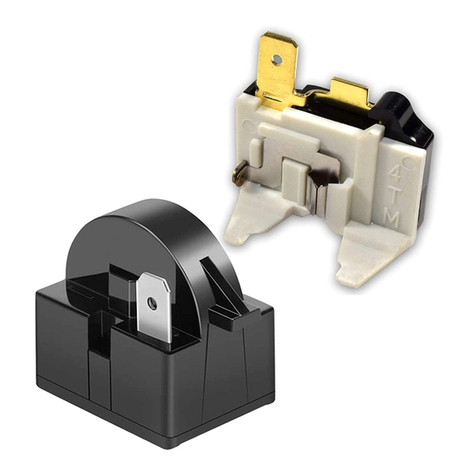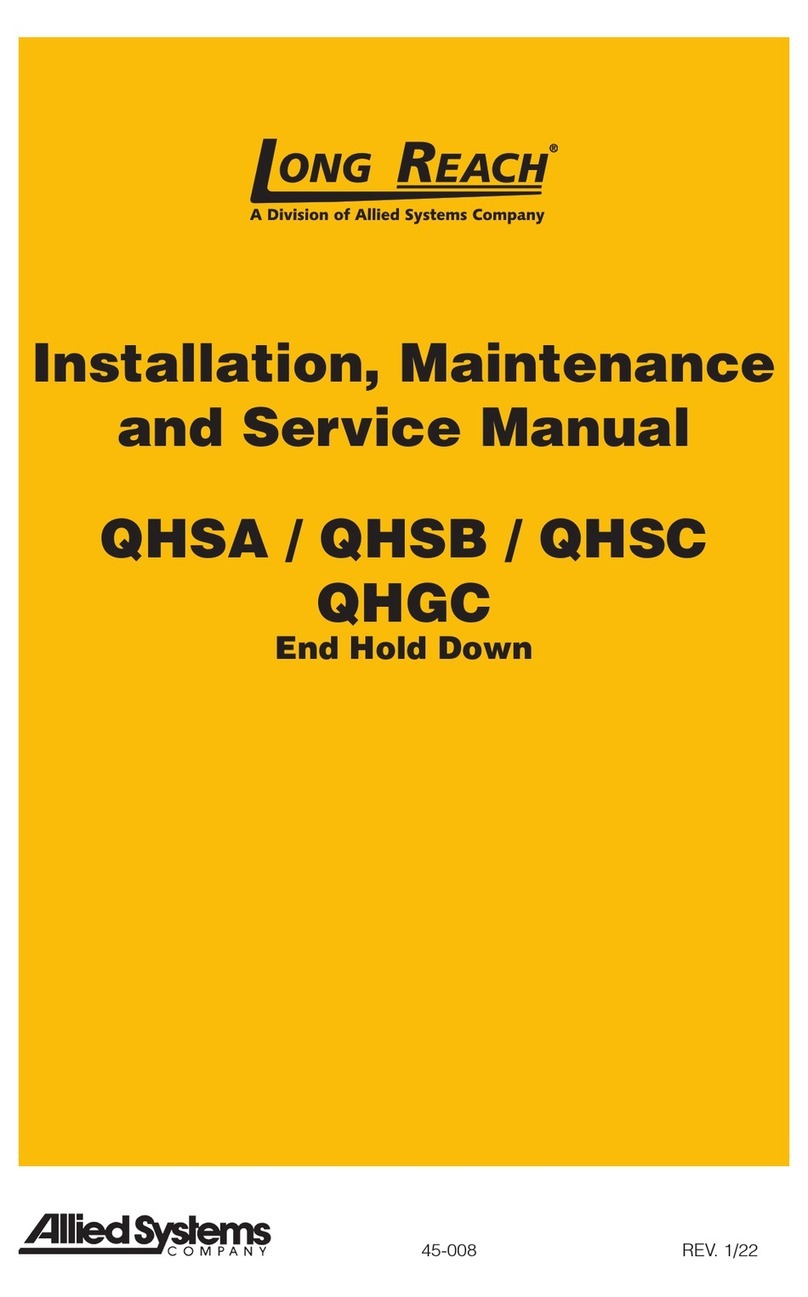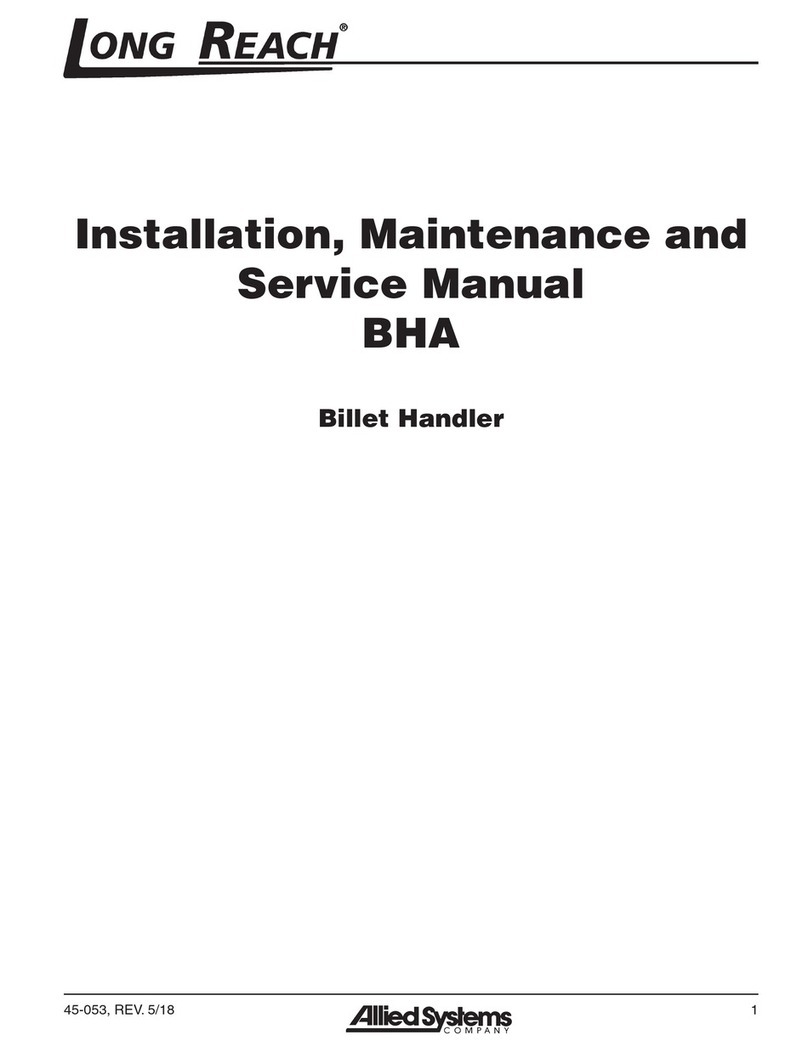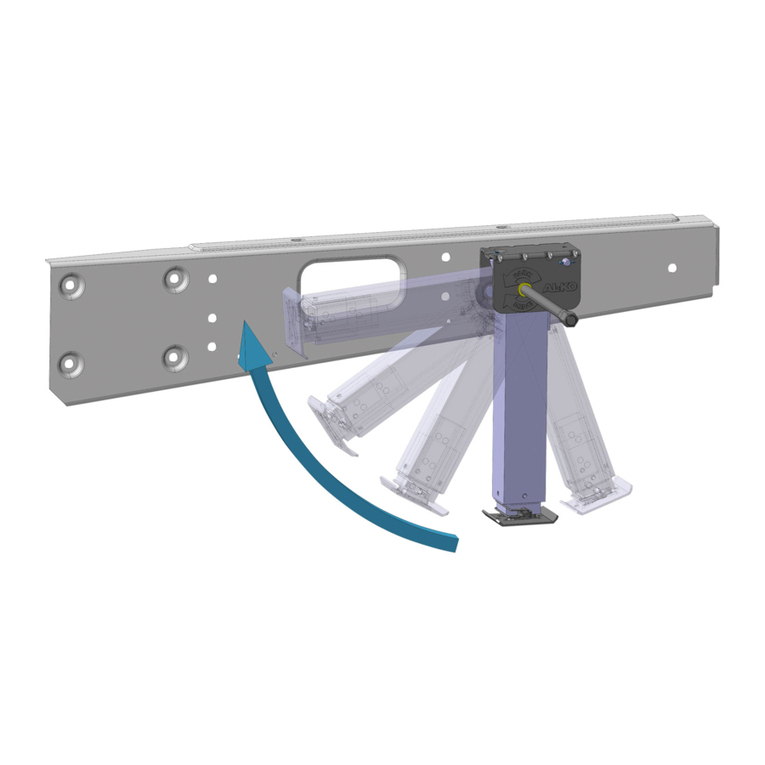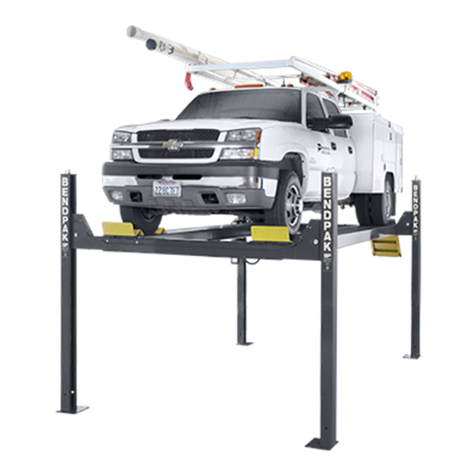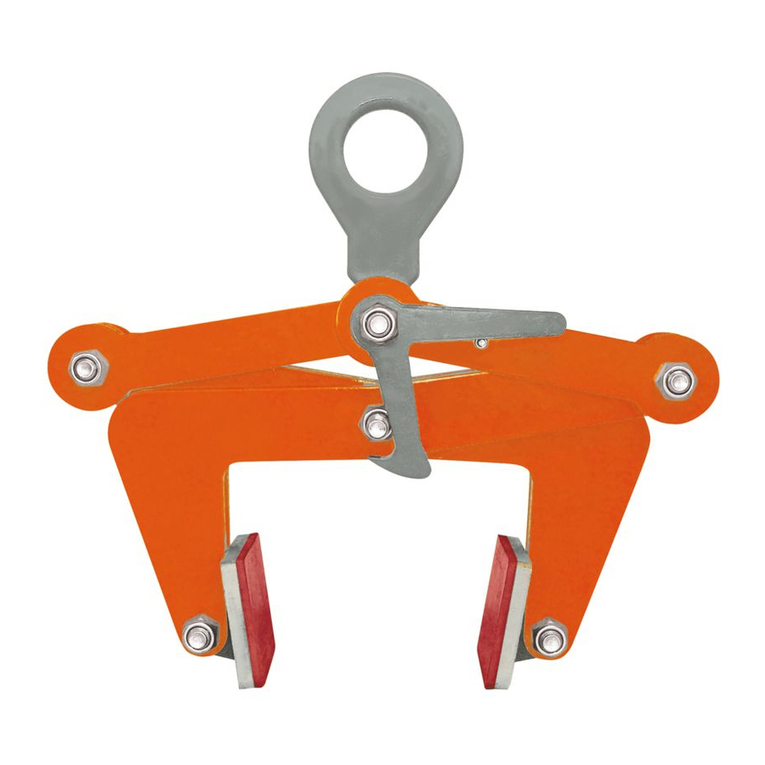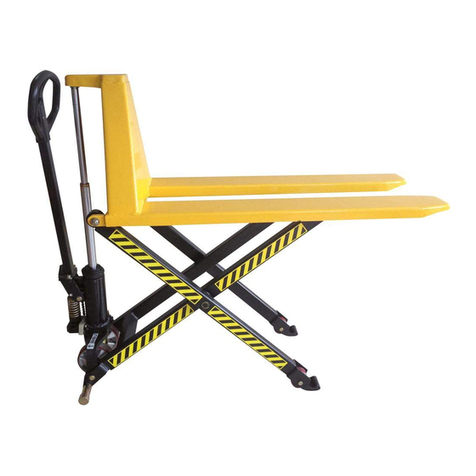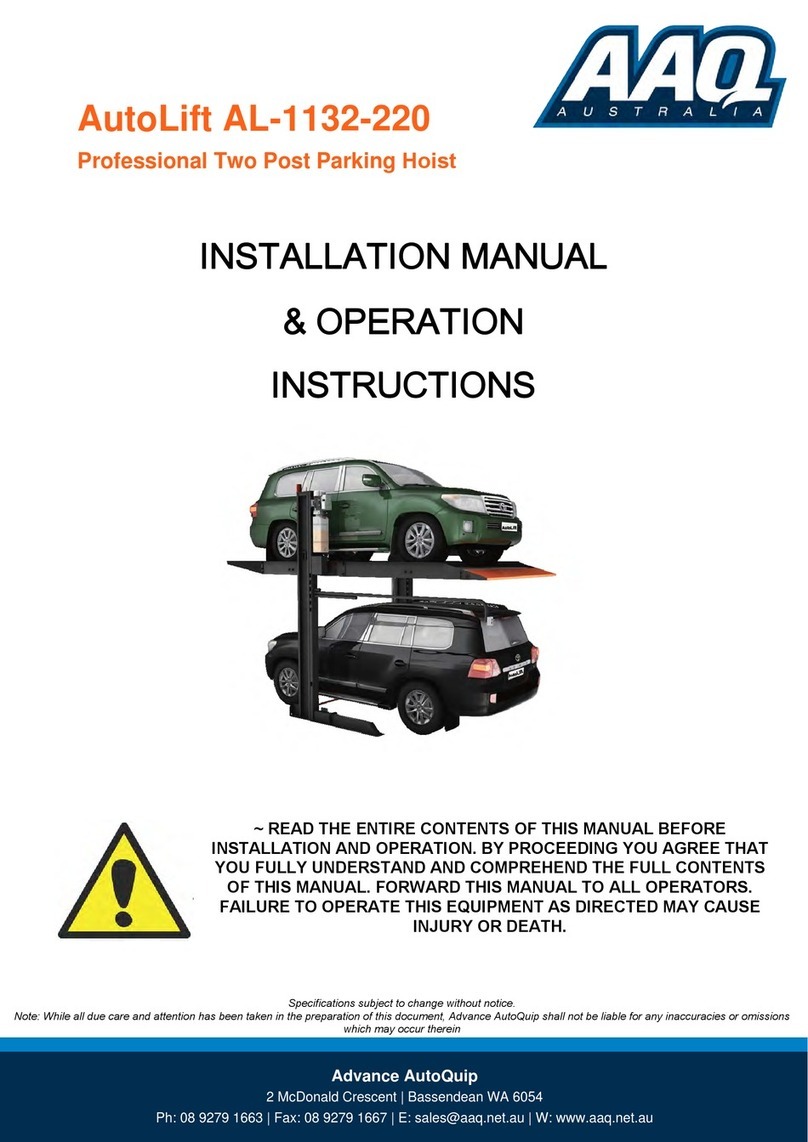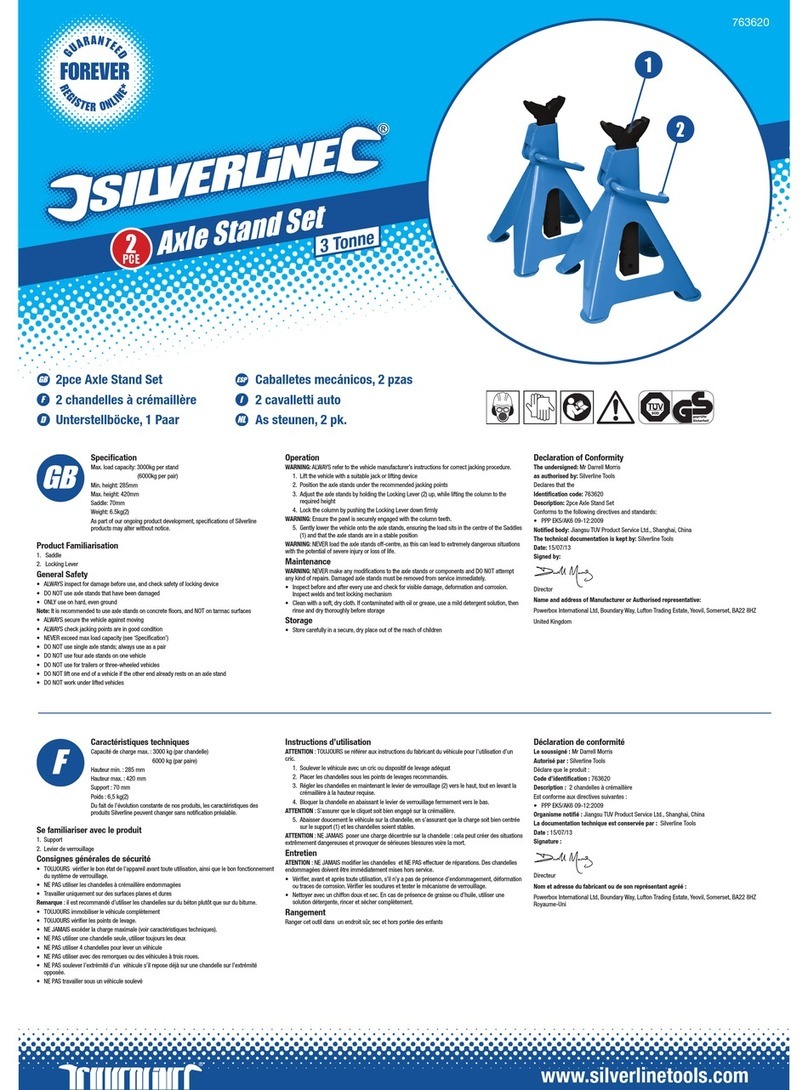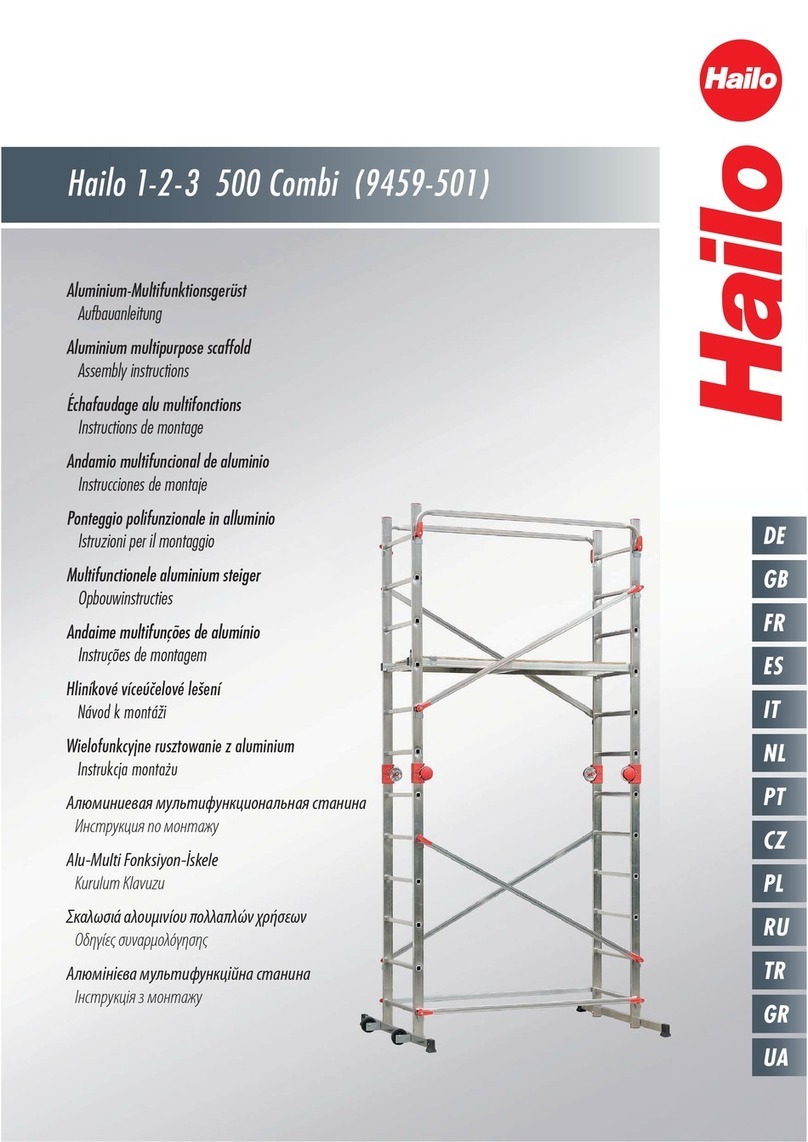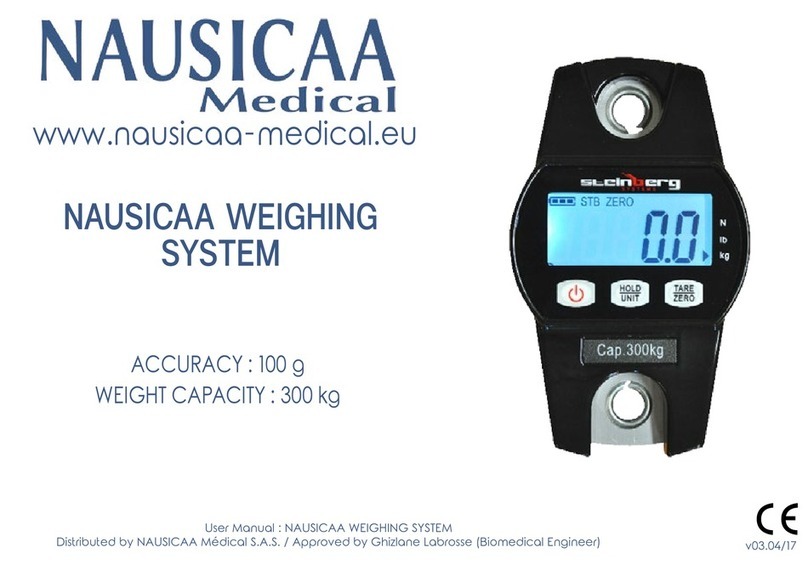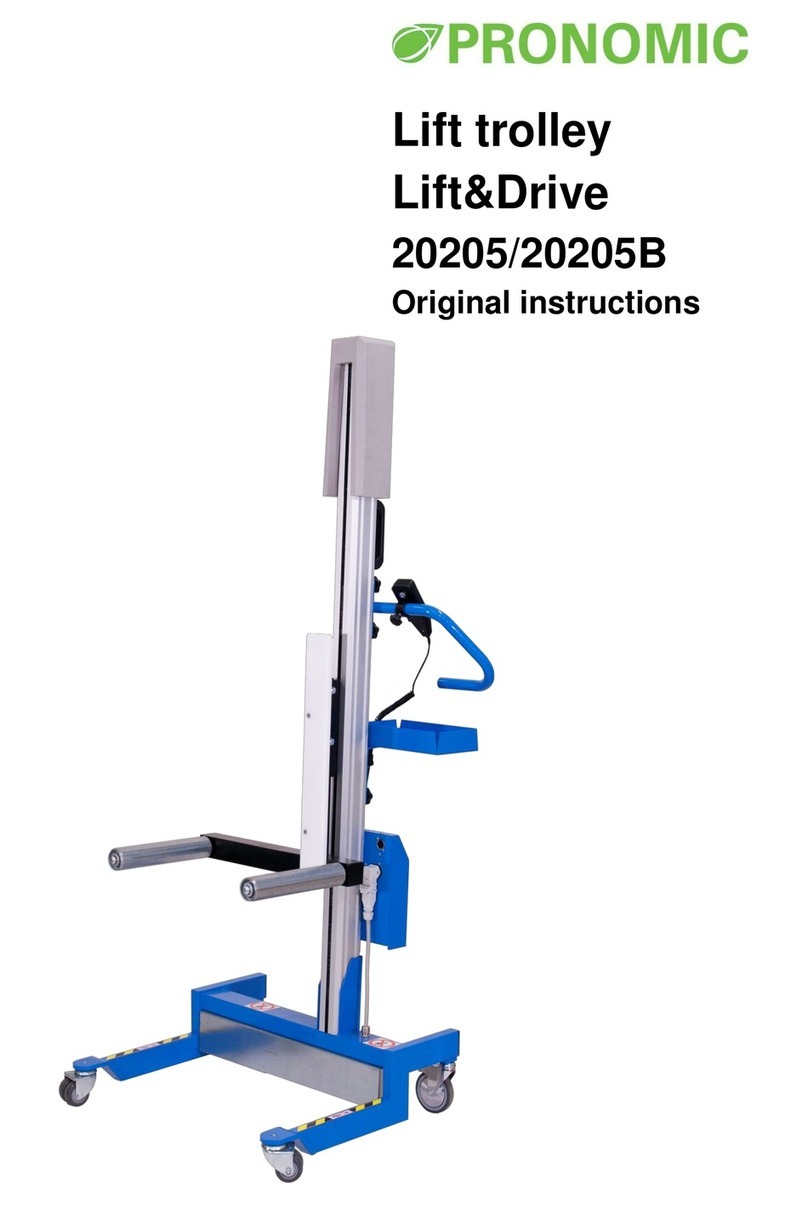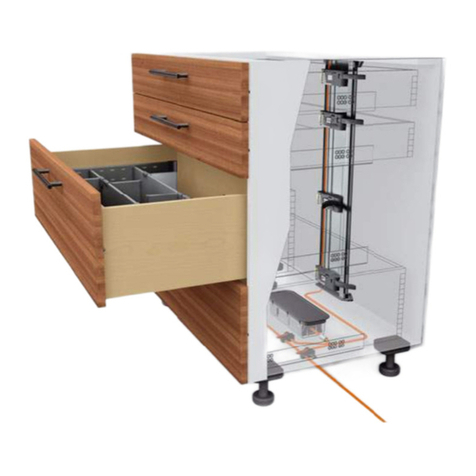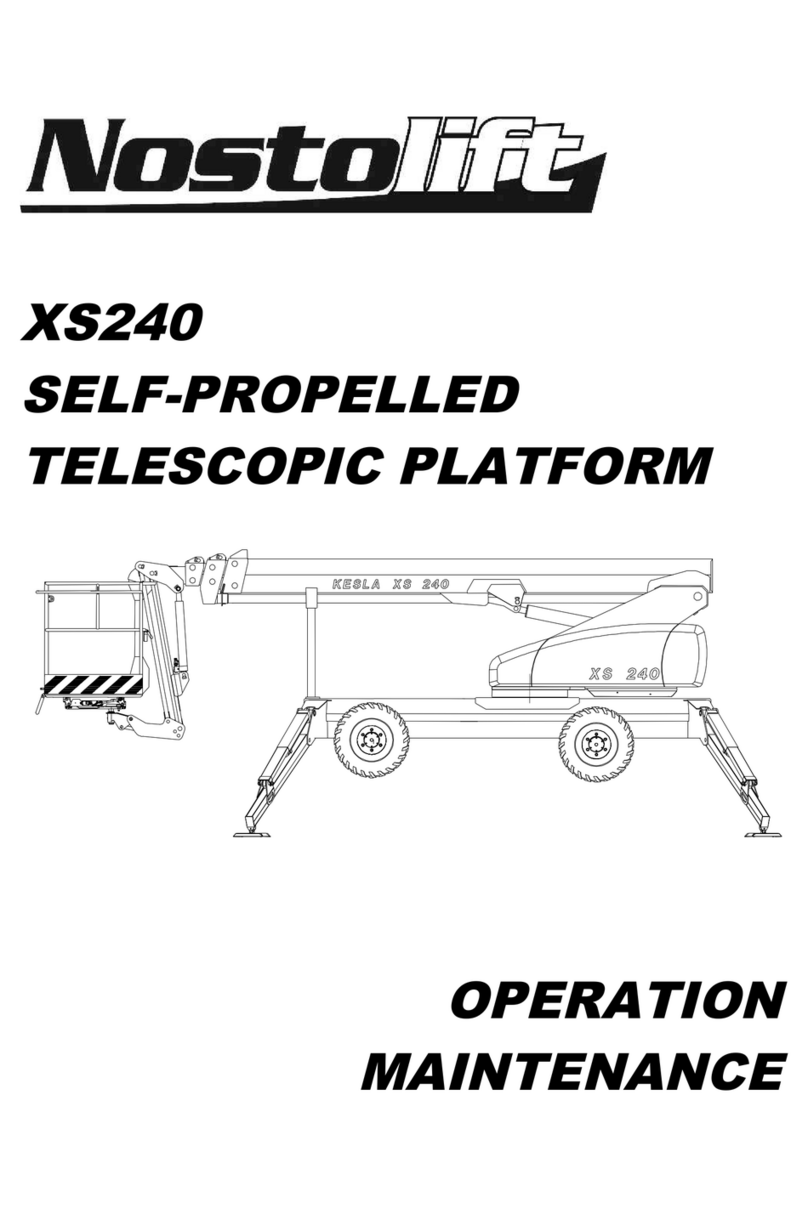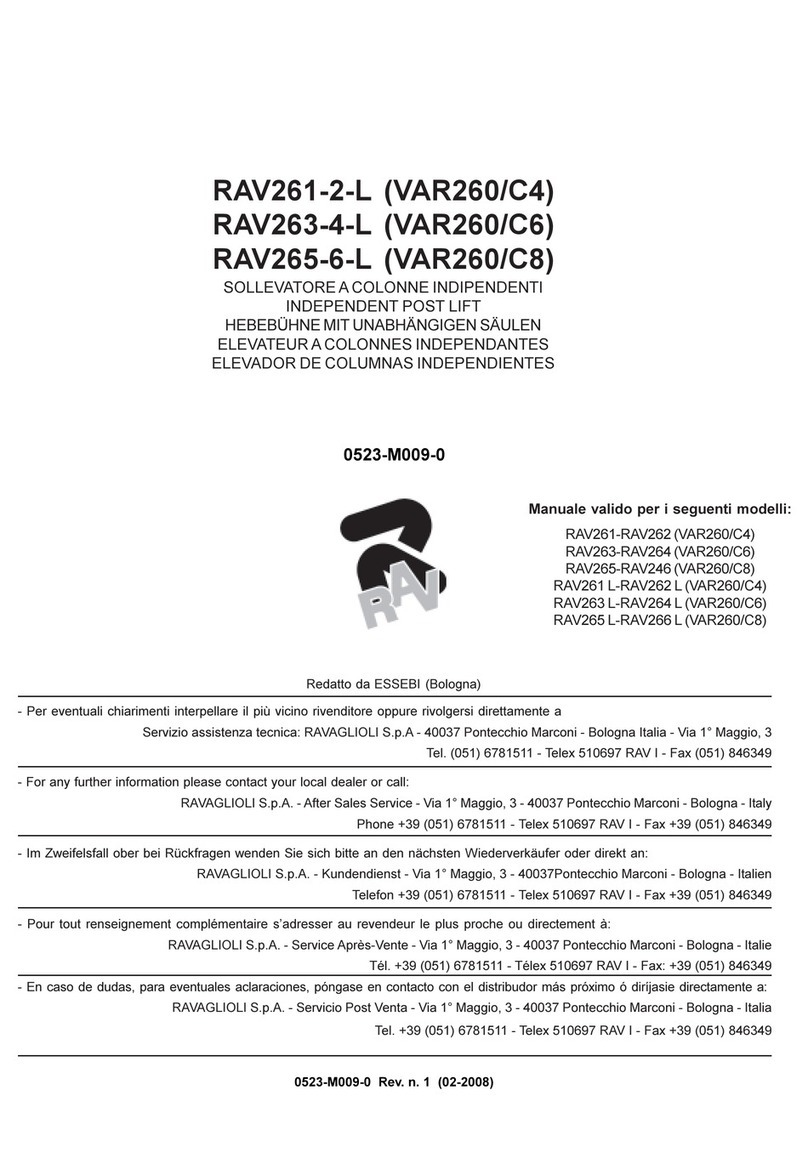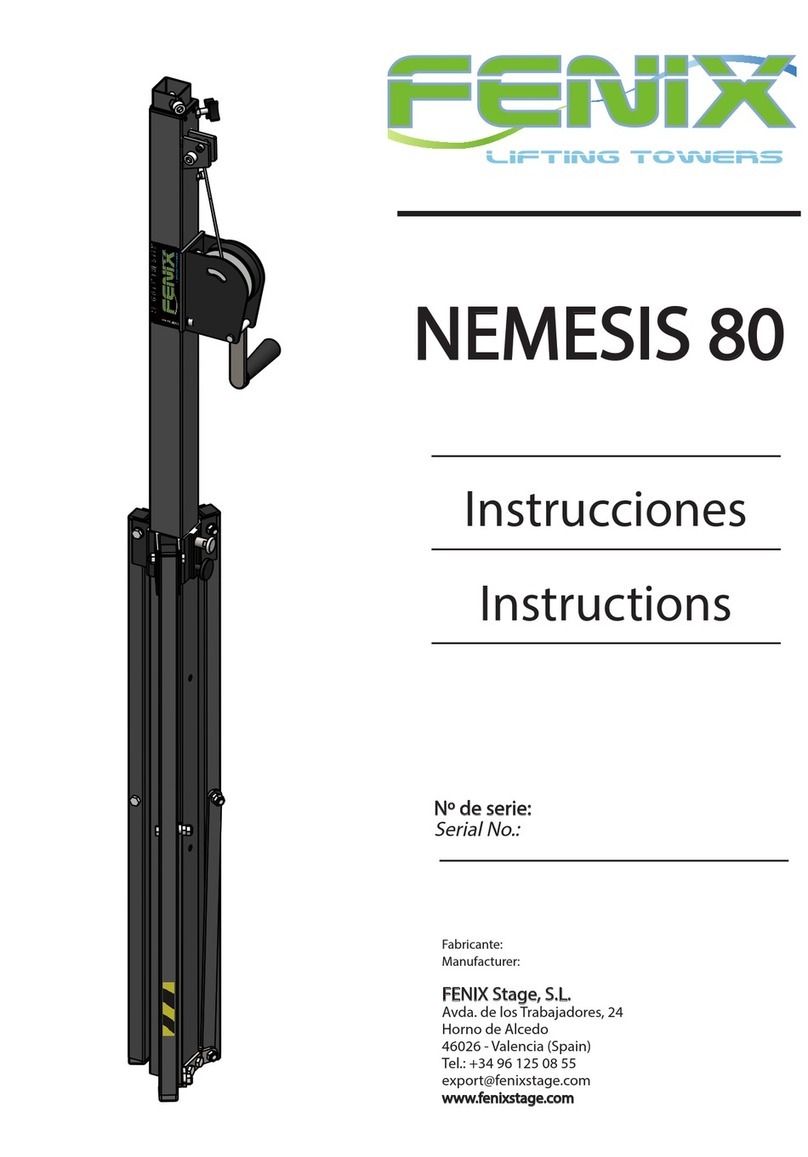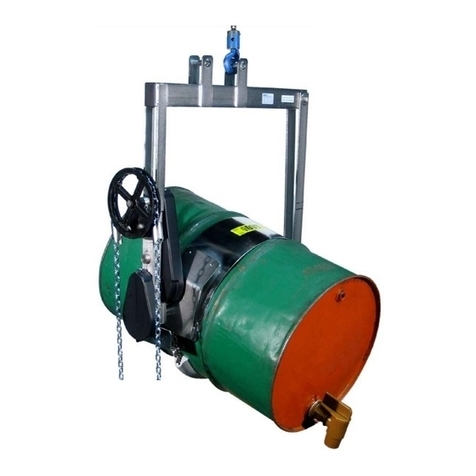Allied Systems LONG REACH FLN Series Manual

Installation, Maintenance
and Service Manual
FLN and FLS
Heavy Duty Fork Positioners
REV. 8/2045-009

45-009 REV. 8/20
THIS PAGE WAS INTENTIONALLY LEFT BLANK

45-009 REV. 8/20 3
TABLE OF CONTENTS
SECTION 1 NAMEPLATE LOCATION ............... 4
SECTION 2 MODEL NUMBER DESCRIPTION.5
FLN Series Model Number:..........................5
FLS Series Model Number: ..........................5
SECTION 3 SAFETY SUMMARY ...................... 6
3.1 Safety Information...................................6
3.2 Safety Regulations..................................6
3.3 Safety Symbols.......................................6
3.4 Labeling ..................................................7
3.5 Training ...................................................7
3.6 Personnel Safety.....................................8
3.7 Pre-start Checks .....................................9
3.8 Operation Warnings................................9
3.9 Hydraulic Hazards .................................9
3.10 Electrical Hazards............................... 10
3.11 Maintenance Warnings........................ 10
3.12 Load Handling..................................... 11
3.13 Load Positioning .................................12
3.14 Operator’s Controls ............................13
3.15 Industry Standards..............................14
3.16 Clamp Open Control ...........................14
SECTION 4 INSTALLATION PROCEDURE......17
4.1 Truck Requirements .............................17
4.2 Attachment Installation..........................18
4.2.1 Installations with Bolt-On Hooks........19
4.2.2 Installations with Quick Hooks...........21
4.2.3 Installations with Sideshift..................21
4.2.4 Lower Roller Assemblies (Sideshift
Units Only)..................................................22
4.3 Fork Cylinder Anchor (Some FLS and
FLN Models) ......................................................23
4.4 Fork Installation Instructions.................23
4.4.1 Narrow Fork .......................................24
4.4.2 Wide Fork ..........................................24
4.5 Hydraulic Connections..........................24
SECTION 5 MAINTENANCE SCHEDULE....... 27
5.1 Schedule...............................................27
5.2 Torque Specifications............................28
SECTION 6 SERVICE PROCEDURE.............. 29
6.1 Attachment Removal.............................29
6.2 Cylinder Removal..................................30
6.3 Cylinder Disassembly ...........................30
6.4 Cylinder Inspection ...............................32
6.5 Cylinder Assembly ................................33
6.6 Cylinder Installation ..............................34
6.7 Hydraulic Valve Removal ......................34
6.8 Hydraulic Valve Installation ...................35
6.9 Reusable Hose Fittings.........................36
6.9.1 Remove Fitting...................................36
6.9.2 Fitting Assembly.................................37

45-009 REV. 8/20
4
SECTION 1 NAMEPLATE LOCATION
- -
Date received:
APPROXIMATE
S/N PLATE
LOCATION
NOTICE
When you receive your attachment, locate the Long
Reach nameplate (upper left corner on the body). Record
the information from the nameplate, along with the date
received, at the bottom of this page.
If the nameplate is missing, look for the serial number
stamped directly into the metal at the nameplate location
and consult the factory for details.

45-009 REV. 8/20 5
MODEL SPECIFIC
DESIGNATOR
01 = Standard
Consult factory
for model
specifics other
than standard
designation
OEM CUSTOM
UNIT DESIGNATOR
NS = Nissan
HY = Hyster
TY = Toyota
MODEL
SPECIFIC
DESIGNATOR
01 = Standard
FLN Series Model Number:
FLS Series Model Number:
SERIES
FLN = Heavy
duty fork
positioner
SERIES
FLS =
Heavy duty
sideshifting
fork positioner
CAPACITY
055 = 5,500 lbs
100 = 10,000 lbs
150 = 15,000 lbs
CAPACITY
055 = 5,500 lbs
100 = 10,000 lbs
120 = 12,000 lbs
150 = 15,000 lbs
175 = 17,500 lbs
WIDTH
325 = 32.50"
385 = 38.50"
415 = 41.50"
425 = 42.50"
505 = 50.50"
625 = 62.50"
785 = 78.50"
WIDTH
104 = 104.0"
385 = 38.50"
415 = 41.50"
425 = 42.50"
472 = 47.20"
475 = 47.50"
485 = 48.50"
505 = 50.50"
525 = 52.50"
625 = 62.50"
655 = 65.50"
715 = 71.50"
725 = 72.50"
745 = 74.50"
780 = 78.00"
785 = 78.50"
DESIGN
C = Weld-on fork
installation
D = No weld fork
carriers
DESIGN
DESIGN
E = No-weld
F = Weld-on fork
G = No-weld
MOUNTING
CLASS
A = ITA II
B = ITA III
C = ITA IV
MOUNTING
CLASS
A = ITA II
B = ITA III
C = ITA IV
Note:
Weld = Weld cylinder anchor on the back of fork
No-weld = Supplied fork carrier
Note:
Weld = Weld cylinder anchor on the back of fork
No-weld = Supplied fork carrier
Each attachment is identified by a model number and a serial number located on the
nameplate attached to the unit prior to shipment. Long Reach’s model numbers are
designed to describe how an attachment is equipped. The guide below illustrates the
information that is represented in a multi-digit model number. Always include model and
serial number when ordering parts or requesting service information.
0
5
B
A
4
3
1
8
0
A 0
F
F
L
L
C
E
1
0
0
5
5
5
1
A 1
N
S
SECTION 2 MODEL NUMBER DESCRIPTION

45-009 REV. 8/20
6
3.1 Safety Information
Safety is Everyone’s Responsibility
Whether you are new on the job or a seasoned veteran, these safety tips may prevent
injury to you, to others, or to the materials you are handling. Always be alert, watch out
for others, and follow these suggestions:
Attachments handle material, not people.
Safety starts with common sense, good judgement,
properly maintained equipment, careful operation, and
properly trained operators.
The safety instructions and warnings, as documented in this manual and shipped with the
machine, provide the most reliable procedures for the safe operation and maintenance
of your Long Reach attachment. It’s your responsibility to see that they are carried out.
3.2 Safety Regulations
Know your company’s safety rules. Some companies have site-specific directions and
procedures. The methods outlined in your operator’s manual provide a basis for safe oper-
ation of the machine. Because of special conditions, your company’s material handling
procedures may be somewhat different from those shown in this manual.
3.3 Safety Symbols
The following terms define the various precautions and notices:
DANGER
Indicates a hazardous situation which, if not avoided,
will result in death or serious injury. Carefully read the
message that follows to prevent serious injury or death.
WARNING
Indicates a hazardous situation which, if not avoided,
could result in death or serious injury. Carefully read the
message that follows to prevent serious injury or death.
SECTION 3 SAFETY SUMMARY

45-009 REV. 8/20 7
CAUTION
Indicates a hazardous situation which, if not avoided,
could result in minor or moderate injury, or equipment
damage or void the machine warranty. Carefully read the
message that follows to prevent minor or moderate injury.
NOTICE
Describes information that is useful but not safety related.
WARNING
Multiple hazards.
Ignoring safety warnings may cause equipment damage,
personal injury or death.
All possible safety hazards cannot be foreseen and
included in this manual. The operator must always be
alert to possible hazards that could endanger personnel
or damage the equipment.
3.4 Labeling
• Change capacity, operation, and maintenance instruction plates, tags, or decals when
a forklift truck is equipped with an attachment. If the truck is equipped with front-end
attachments other than factory installed attachments, truck must be marked to iden-
tify the attachments and show the approximate weight of the truck and attachment
combination at maximum elevation with load laterally centered.
3.5 Training
• Make sure all operators are trained in the fork and attachment adaptation, operation,
and use limitations. Retrain an operator if a new attachment is added to the forklift.
Consult the operator’s manual for instructions on how to use the new equipment.
• Know the mechanical limitations of your forklift.
• Modifications or additions that affect capacity or safe operation must have prior written
approval from the forklift truck manufacturer. Capacity, operation, and maintenance
instruction plates, tags, or decals shall be changed accordingly.
• Never use free rigging for a below-the-forks lift. It could affect the capacity and safe
operation of a lift truck.

45-009 REV. 8/20
8
3.6 Personnel Safety
• When removing or installing dismountable attachments always keep hands and feet
free from dangerous positions or pinch points. Never leave a dismounted attachment
in a dangerous position.
• Keep hands, feet, long hair and clothing away from power-driven parts. Do not wear
loose fitting clothing or jewelry while performing maintenance and lubrication in these
areas.
• Never jump on or off the machine.
• Never stand on top of material being raised, lowered, or transported. (Figure 3-1)
Figure 3-1
Figure 3-2
Figure 3-3
• Never use the attachment or its load to support a man-carrying device.
• Never allow anyone under a load or under the carriage. (Figure 3-2)
• Never stand in front of or beside an attachment that is being operated. Never allow
another person to approach an attachment that is being operated. (Figure 3-3)
• Never leave an attachment or load in an elevated position.
• Never reach through the mast of the truck. Keep all parts of the body within the
driver’s compartment.

45-009 REV. 8/20 9
• Always operate an attachment from the operator’s seat, never while standing next
to the lift truck.
• Do not allow riders on the truck at any time.
• Always use reverse when carrying a load that impedes full vision. Watch for pedes-
trians when transporting.
• Always use personal protective equipment (PPE) appropriate to the situation.
3.7 Pre-start Checks
• Check your equipment before you operate it. If anything looks wrong, unusual or
different, report it before using the attachment.
• Do not operate this machine if you know of malfunctions, missing parts, and/or mis-ad-
justments. These situations can cause or contribute to an accident or damage to the
machine. Stop the machine immediately if problems arise after starting.
• Check to make sure the attachment on your truck is the same as on the truck capacity
plate.
• Check for hydraulic leaks and cracked hoses or fittings. Check the hydraulic oil level
in the lift truck hydraulic reservoir.
• All electrical cables and connectors must be in good condition. Use caution in wet
weather to avoid danger from electrical shock.
• Always check the attachment for proper fit and engagement of the truck carriage.
3.8 Operation Warnings
• You must be trained to operate this equipment prior to operation. Be extremely careful
if you do not normally operate this machine. Reorient yourself to the machine before
starting, then proceed slowly.
• Always operate an attachment from the driver’s seat.
• Always lower the attachment if you need to leave the lift truck. A lift truck supporting
a load requires your full attention.
3.9 Hydraulic Hazards
DANGER
Injection hazard.
Infection and gangrene will result when hydraulic oil
penetrates the skin. See a doctor immediately to prevent
loss of limb or death.
Use a piece of cardboard to check for hydraulic leaks.

45-009 REV. 8/20
10
• Wear personal protective equipment, such as gloves and safety glasses, whenever
servicing or checking a hydraulic system.
• Assume that all hydraulic hoses and components are pressurized. Relieve all hydraulic
pressure before disconnecting any hydraulic line.
• Never try to stop or check for a hydraulic leak with any part of your body; use a piece
of cardboard to check for hydraulic leaks.
3.10 Electrical Hazards
WARNING
Electrocution hazard.
Contact with energized equipment may result in injury
or death and will damage equipment.
Remain at least 25 feet from high voltage electrical
wires.
• All electrical cables and connectors must be in good condition (free of corrosion,
damage, etc). Use caution in wet weather to avoid danger from electrical shock.
Never attempt electrical testing or repair while standing in water.
• Do not wear electrically conductive jewelry, clothing, or other items while working on
the electrical system.
3.11 Maintenance Warnings
Maintenance, lubrication and repair of this machine can be dangerous unless performed
properly. You must have the necessary skills and information, proper tools and equip-
ment. Work in a method that is safe, correct, and meets your company’s requirements.
• Do not attempt to make adjustments, or perform maintenance or service unless you
are authorized and qualified to do so.
• Include attachments in a scheduled maintenance and inspection program. Tailor
inspection steps to the attachment.
• Unless specified in service procedures, never attempt maintenance or lubrication
procedures while the machine is moving or the engine is running.
• Always perform all maintenance and lubrication procedures with the machine on level
ground, parked away from traffic lanes.

45-009 REV. 8/20 11
NOTICE
Local laws and regulations may require that additional
safety measures be taken.
• Never rely on the hydraulic system to support any part of the machine during main-
tenance or lubrication. Never stand under a component that is supported only by the
hydraulics. Make sure it is resting on its mechanical stops or appropriate safety stands.
• Use caution when working around hot fluids. Always allow lubricating and hydraulic
oils to cool before draining. Burns can be severe.
• Use extreme caution when using compressed air to blow parts dry. The pressure
should not exceed 30 psi (208 kPa) at the nozzle. Never use compressed air on
yourself. Air pressure penetrating your skin can be fatal.
WARNING
Suffocation hazard.
Engine exhaust fumes can cause death.
Remove the exhaust fumes from the area with an exhaust
pipe extension, or use ventilation fans and open shop
doors to provide adequate ventilation.
• Before disconnecting hydraulic lines, be sure to lower all loads and relieve all hydraulic
pressure. The load could fall on you, or escaping hydraulic oil could cause severe
personal injury.
• Prevent personal injury or equipment damage by using a lifting device with a lifting
capacity greater than twice the weight of any equipment to be lifted.
3.12 Load Handling
• Treat an unloaded forklift with an attachment as partially loaded.
CAUTION
Injury or equipment damage may result if the capacity
of the truck and attachment combined are less than the
attachment capacity.
Consult truck nameplate for truck capacity with an
attachment installed.

45-009 REV. 8/20
12
• Never overload the attachment. Refer to the attachment nameplate for the rated
capacity of the attachment. Refer to the truck nameplate for the maximum net working
capacity of the truck/attachment combination. Never use a load to support or move
another object. Doing so can easily exceed the holding capacity of the attachment.
• Always check loads to be handled. Correct loads that are broken, unbalanced, loose,
or too heavy.
• Never lift, lower, side shift, pivot, rotate, or tilt loads while traveling. Repositioning loads
while traveling affects the stability of the truck and may impede vision or clearances.
• Do not use an attachment to open or close boxcar doors. Doing so can severely
damage the attachment and cause loss of warranty. Damage to clamp arms may
result in product damage.
• Do not carry loose items or unsupported loads on top of a clamped load.
• Never use chains, cables, or other devices in conjunction with an attachment for
load handling.
• Never clamp loads other than what the attachment was designed to handle.
• Always carry cylindrically shaped loads in the vertical position, not the horizontal.
• Always clamp loads with the contact pads, if applicable, not the arm or arm base.
• Never rotate a load that is off center to the centerline of rotation. Severe damage to
the rotator could result.
• Always ensure that the load is the same width as the pallet and neatly stacked when
using a carton clamp.
3.13 Load Positioning
• Be accurate in load placement. It’s important to know what the load will do when it’s
released.
• Always carry loads as close to the floor as possible, consistent with the surface being
traversed. Scraping or bumping the floor surface with the load or the attachment can
severely damage the attachment and cause product damage. The mast should be
tilted back.
• Always keep the load positioned as close as possible to the horizontal center of the
lift truck.
• Always back down ramps or inclines. Driving forward down a ramp or incline with a
clamped load will lessen the stability of the truck. (Figure 3-4)

45-009 REV. 8/20 13
Figure 3-4
• Do not cross dock boards or dock levelers with the attachment or carriage fully
lowered. Ramming the front or rear of the attachment against a dock board can
cause severe damage.
• Limit lift truck movement to a minimum when high stacking. Limit sideshift movement
to a minimum when high stacking.
• Always be observant when high stacking. Look for poorly stacked loads, overhead
obstacles, broken cartons, or damaged products in the stack.
• Travel slowly around corners. Sound horn on blind corners. Be careful of tail swing
and overhead clearances. Watch in all directions. Avoid sudden stops.
3.14 Operator’s Controls
Some lift trucks are equipped with a single lever to control both hoist and tilt functions,
others have separate levers for each function. Refer to your lift truck manual for more
information.
For clarity, the direction of arm movement is shown on the control handle. To move the
arms in the direction shown, pull the handle towards the operator. To move the arms in
the opposite direction, the push the handle away from the operator. (Figure 3-5)
Clamp Fork position
Push/pull Rotate Sideshift
Figure 3-5 Operator controls

45-009 REV. 8/20
14
Lifting speed is controlled by the speed of the engine and the position of the control
lever. Engine speed has no effect on lowering speed.
Before going on the job, shift the truck control levers one way and then the other to
determine which direction the attachment moves when the levers are shifted. Make sure
the attachment moves smoothly throughout its travel, without binding or pinching hoses.
CAUTION
Equipment damage hazard.
Injury or equipment damage may result if the attachment
does NOT operate smoothly.
Do not take malfunctioning equipment on the job. Check
with your supervisor about needed repairs.
3.15 Industry Standards
ANSI/ITSDF B56.1-2016 is the published sequence and direction standard for lever- and
hand-type controls.
NOTICE
The chart on the following page shows industry
standards. Your equipment may be different. If you do
not routinely operate this equipment, refresher training
is recommended. You must reacquaint yourself with this
manual and the equipment before starting, and then
proceed slowly.
Special controls such as automatic devices should be identified, preferably according to
the recommendations in Figure 3-6.
When a function is controlled by a pair of push buttons, they should operate in the same
sense as the lever controls. For example, pushing a button located to the rear (relative
to the operator’s position) should serve the same function as moving a control lever to
the rear.
3.16 Clamp Open Control
Effective October 7, 2010, safety standard ANSI/ITSDF B56.1, Section 7.25.7 covers all lift
trucks with a load bearing clamp (paper roll clamp, carton clamp, etc.), and requires the
driver to make two distinct motions before opening or releasing the clamp. For example,
you must press a switch and then move a lever to unclamp the load. This requirement
applies to new and used attachments being mounted on trucks which shipped from the
factory after October 7, 2010, and is a recommended feature to be installed on dealer
orders and existing applications.

45-009 REV. 8/20 15
WARNING
Load loss hazard.
Injury or equipment/load damage may result if a fork
positioner attachment is used to clamp a load. The fork
positioner does not have enough clamping force to safely
hold a load.
Always support the load with the forks. Do not use fork
positioning attachments as clamps.
Figure 3-6, Do Not Clamp

45-009 REV. 8/20
16
Function
Direction of motion
Load Operator's hand on contro handle, facing the load*
Hoist
Up
Down
Rearward or up
Forward or down
Reach Retract
Extend
Rearward or up**
Forward or down
Tilt Rearward
Forward
Rearward or up**
Forward or down
Sideshift Right
Left
Rearward or up
Forward or down
Push-pull Rearward
Forward
Rearward or up**
Forward or down
Rotate, lateral Clockwise
Counterclockwise
Rearward or up
Forward or down
Rotate, longitude Rearward
Forward
Rearward or up
Forward or down
Load stabilizer Down
Up
Rearward or up
Forward or down
Swing Right
Left
Rearward or up
Forward or down
Slope Clockwise
Counterclockwise
Rearward or up
Forward or down
Fork position Together
Apart
Rearward or up
Forward or down
Tr i p Engage
Release
Rearward or up
Forward or down
Grip Engage
Release
Rearward or up
Forward or down
Truck stabilizer Raise
Lower
Rearward or up
Forward or down
Clamp Clamp
Release
Rearward or up
Forward or down
* For high lift order picker trucks and center control pallet trucks, predominant motion of the oper-
ator's hand when actuating the control handle while facing away from the load.
** The sense of rotation of the control handle is intended to be in the same direction as the desired
motion of the mast or load.
Figure 3-7, ANSI/ITSDF
Sequence of location and direction of motion for lever or hand-type controls

45-009 REV. 8/20 17
4.1 Truck Requirements
Long Reach attachments have been designed to operate within specific limits. Operating
pressures above the recommended maximum may cause damage to the attachment
and may void the warranty. Operating pressure specifications for your attachment can
be found on the attachment nameplate. (Section 1)
Hydraulic flow less than the recommended rates, or the use of small I.D. hoses may reduce
operating speed. Higher flow can result in excessive heat buildup, erratic operation and
damage to the truck/attachment hydraulic system. Hydraulic flow specifications for your
attachment can be found on the attachment nameplate. (Section 1)
NOTICE
The dealer and/or the user must provide and install the
valving required to meet the recommended hydraulic
pressures and flow, or must arrange installation of the
required valving at the truck factory.
The attachment model description, found on your shipped
invoice, will state the following truck requirements: flow
(gpm), psi, and minimum truck carriage width.
Recommended hydraulic supplies are as follows:
Min. Max. PSI
Class II 3.2 4.1 2,200 - 3,000
Class III 2.9 6.4 2,200 - 3,000
Class IV 4.0 12.0 2,200 - 3,000
1. The truck carriage must conform to the American National Standard (ANSI) dimen-
sions shown in ANSI/ITSDF B56.11.4-2013.
2. Make sure the truck carriage is clean, conforms to ANSI recommendations, and
the notches are not damaged.
3. The truck hydraulic system must supply to the attachment hydraulic oil that meets
the specifications required to operate the attachment properly. Find specifications
for your attachment on the attachment nameplate. (Section 1)
4. When the truck hydraulic system pressures (PSI) exceeds specified maximum, a
relief valve is recommended in the attachment auxiliary system of the truck or on
the attachment.
SECTION 4 INSTALLATION PROCEDURE

45-009 REV. 8/20
18
5. When the truck hydraulic system flow (gpm) exceeds specified maximum, a flow
control valve is recommended to ensure optimal performance.
6. Consult the truck factory and/or Long Reach for guidance.
NOTICE
Equipment damage hazard.
Equipment damage, performance reduction, personal
injury and/or loss of warranty could result if any alter-
ations are made to the original attachment.
Consult with factory before altering original equipment.
4.2 Attachment Installation
There are two kinds of hooks, bolt-on and quick hook. Follow the directions for the hook
on your attachment.
Bolt-On Hooks
Remove the lower bolt-on hooks and, if applicable, make a note of any factory-installed
shims. Shims are used to create space between the hook and carriage.
Bottom
Bar
Bottom Hook
Spacer
Capscrew &
Lockwasher
Figure 4-1, Remove the bottom bolt-on hooks
Bottom
Hook
Spacer
Shim
Figure 4-2, Remove the bottom bolt-on hooks,
leave the spacers and shims, if applicable

45-009 REV. 8/20 19
Quick Hooks
There are two kinds of quick hook, detent-pin style and push-button style.
Button
Slide Plate
Body Push button
to lower slide.
Raise slide
to secure
attachment
to truck.
Figure 4-3, Push-button style quick hook
For push button quick hooks, depress the button on the back of the hook and allow the
slide plate to drop.
Removing push button quick hooks is NOT recommended.
Detent pin
Hook
Figure 4-4, Detent pin style quick hook
For detent-pin style quick hooks, just pull the pin and remove it. The hook will come loose.
4.2.1 Installations with Bolt-On Hooks
1. Center the truck behind the attachment and drive toward it with the mast tilted
forward about 4 degrees.
2. Line up the locking lug (if equpped) with the notch closest to the center on the
truck’s carriage.
3. Raise the truck carriage completely to engage the top hooks with the truck carriage.
Tilt carriage back until the unit is against the carriage bottom fork bar (0 degrees).
4. Inspect for proper engagement of the locking lug in the notch that puts the attach-
ment closest to the center of the truck’s carriage.
5. Weld on the (optional) extra locking lug supplied with the attachment, (two pieces
of 1/2” x 1/2” x 2.00” steel, shipped loose) with either E-6011 or E-6013 welding rod,
or equivalent, on each side of the truck carriage.

45-009 REV. 8/20
20
Locking lug in notch
YXE4C-307
1/2 x 1/2 x 2.00 steel
supplemental
locking lug (optional)
1/16" clearance
Figure 4-5, Welding the optional locking lug
6. Install the bolt-on lower hooks. Check the clearance between the carriage and
the lower hooks. Loosen the bolts on the front of the hooks, and slide them up or
down so the clearance is no more than 3/32”.
On Class II and Class lll units, tighten the 3/8” bolts to 33 ft-lbs. On Class lV
units tighten the 1/2” bolts to 77 ft-lbs. On units using 9/16” UNC bolts, tighten
the bolts to 112 ft-lbs.
Notice
Make note of any factory-installed spacers or shims.
Shims are used to create clearance between the hook
and carriage.
Maximum
Clearance
1/8"
Maximum
Clearance
1/32"
Class III Shims Shown Bottom Hook
Spacer
Lower ITA Bar
Figure 4-6, Adjusting bolt-on bottom hooks with spacers
This manual suits for next models
9
Table of contents
Other Allied Systems Lifting System manuals
